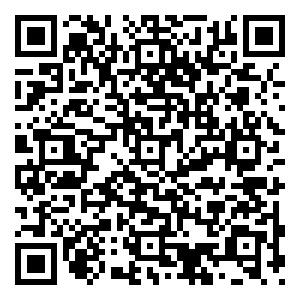|
Boutin J, Yin Xiaobin, Martin N, et al. 2011. Sea surface salinityfrom SMOS satellite and in situ observations: surface autonomousdrifters in the tropical Atlantic Ocean. http://earth.eo.esa.int/workshops/smos-science-workshop/SESSION-3-OCEAN-SALINITY/J.Boutin-SMOS-Satellite-Sea-Surface-Salinity-situ.pdf
|
|
Brassington Gary B, Divakaran Prasanth. 2009. The theoretical impactof remotely sensed sea surface salinity observations in a multivariateassimilation system. Ocean Modelling, 27: 70-81
|
|
CP34. 2008. Detailed Processing Model for SMOS CP34 OS L3 Processors.http://www.cp34-users.cmima.csic.es/light-web/ documentationFont J, Boutin J, Reul N, et al. 2011. Status of sea surface salinityproduct provided by SMOS. http://earth.eo.esa.int/workshops/smos-science-workshop/SESSION-3-OCEAN-SALINITY/J.Font-SMOS-Status-Sea-Surface-Salinity.pdf
|
|
Gourrion J, Ballabrera J, Aretxabaleta A L, et al. 2010. Preliminaryvalidation of SMOS products (Levels 3 and 4). IGARSS 2010 Proceedings.Honolulu USA: IEEE International, 3170-3173
|
|
Jordà Gabriel, Gomis Damià. 2010. Accuracy of SMOS Level 3 SSSproducts related to observational errors. IEEE Trans Geosci RemoteSens, 48(4): 1694-1701
|
|
Jordà Gabriel, Gomis Damià, Talone Marco. 2011. The SMOS L3mapping algorithm for sea surface salinity. IEEE Trans GeosciRemote Sens, 49(3): 1032-1051
|
|
Kainulainen Juha, Martin-Neira Manuel, Closa Josep, et al. 2011.Performance and stability of the SMOS reference radiometers-status of investigations after 20 months of operation.http://earth.eo.esa.int/workshops/smos-science-workshop/SESSION-1-INSTRUMENTS/J.Kainulainen-SMOS-perfomance-stability-reference-radiometers.pdf
|
|
Kerr Yann H,Wigneron Jean-Pierre, Boutin Jacqueline, et al. 2010. TheSMOS mission: new tool for monitoring key elements of theglobal water cycle. Proceedings of the IEEE, 98(5): 666-687
|
|
Martin-Neira M, Corbella I, Torres F, et al. 2011. Overview: MIRASinstrument performance and status of RFI. http://earth.eo.esa.int/ workshops/smos-science-workshop/SESSION-1-INSTRUMENTS/M.M.Neira-Overview-MIRAS-Instrument-Status-RFI.pdf
|
|
Reul Nicolas, Tenerelli J, Boutin J, et al. 2011. First SSS productsfrom SMOS generated at the Centre Aval des Donnees SMOS.http://earth.eo.esa.int/workshops/smos-science-workshop/SESSION-3-OCEAN-SALINITY/N.Reul-SMOS-1st-SSS-Products.pdf
|
|
Sabia Roberto, Camps Adriano, TaloneMarco, et al. 2010. Determinationof the sea surface salinity error budget in the soil moistureand ocean salinity mission. IEEE Trans Geosci Remote Sens,48(4): 1684-1693
|
|
Snyder J P. 1992. An equal-area map projection for polyhedral globes.Cartographica, 29(1): 10-21
|
|
Tenerelli Joseph E, Reul Nicolas. 2010. Analysis of SMOS brightnesstemperatures obtained from March through May 2010.http://argans.co.uk/smos/docs/papers/067-D3-jtenerelli. pdf
|
|
Yin Xiaobin, Boutin J,Martin N, et al. 2011. Sea surface roughness andfoam signature onto SMOS brightness temperature and salinity.http://earth.eo.esa.int/workshops/smos-science-workshop/SESSION-3-OCEAN-SALINITY/X.Yin-SMOS-brightness-temperature-salinity.pdf
|
|
Yin Xiaobin, Liu Yuguang, Zhang Hande, et al. 2005. Microwave remotesensing of sea surface salinity′ lCa study on microwaveradiation theory of calm sea surface. Chinese High TechnologyLetters (in Chinese), 15(8): 86-90
|
|
Zine Sonia, Boutin Jacqueline, Font Jordi, et al. 2008. Overview ofthe SMOS sea surface salinity prototype processor. IEEE TransGeosci Remote Sens, 46(3): 621-64
|

 点击查看大图
点击查看大图



 下载:
下载:

